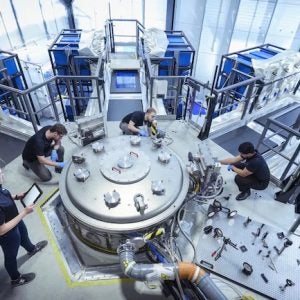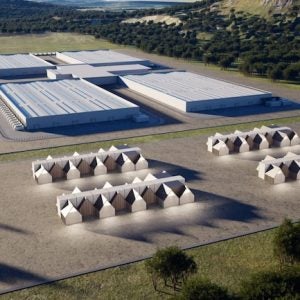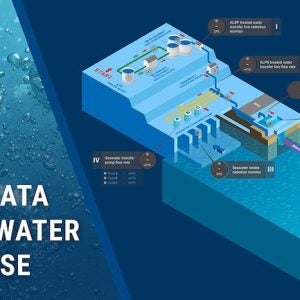After achieving first power in December 2013, Yangjiang 1, operated by CGN (China General Nuclear, formerly China Guangdong Nuclear Power Corp) has entered commercial operation. The 1080 MW reactor in Guangdong province is the third CPR-1000 to start up after Ling Ao 3&4, farther to the east along the coast.
Its construction began in December 2008; unit 2 started construction eight months later. CGN said that there are currenlty five other units under construction at the site: units 2-4 are CPR-1000s, and units 5&6 are ACPR1000.
Unit 2 is currently preparing to conduct hot tests. Equipment installation is underway at unit 3, while civil construction works continue at units 4, 5 and 6. All six reactors should be in operation by 2018, producing a total of around 6100MWe.
The ACPR1000 design has ten major technical improvements over its predecessor the CPR-1000, according to CGN, among them greater capacity, simplified reactor chemical and volume control system, optimized distributed control system, enhanced mitigation capacity of nuclear steam supply system, longer design life and improved resistance to external events
The core of the ACPR1000 comprises 157 fuel assemblies (active length 14ft). In-core instrumentation is inserted from the top of the RPV. In the nuclear steam supply system the steam generator’s heat transfer area is 28% bigger than that of CPR-1000 and the pressurizer cavity has been increased by 26%.
A metal core reflector will extend the reactor vessel design life to 60 years.
The advanced design has three independent safety systems with full physical separation, a low-pressure safety injection system in combination with a residual heat removal system and an in-containment refuelling water storage tank. The design also has improved seismic capability (0.3g compared with 0.2g).
Severe accident management measures include passive autocatalytic hydrogen recombiners, and a core catcher. Unlike the CPR-1000, the ACPR1000 has a double containment that is capable of withstanding large commercial aircraft impacts.
In unrelated news, CGN Chairman He Yu and EDF CEO Henri Proglio signed an agreement on nuclear power cooperation in Paris on March 26, 2014, in the same week that coincidentally AREVA and CNNC signed a similar accord.
According to the agreement, CGN will participate in development of the nuclear new build in UK as controlled by EDF, while both companies will jointly promote the Chinese nuclear power companies as led by CGN to develop the follow-up nuclear new build in UK.
In March, CGN President Zhang Shanming met UK DECC Permanent Secretary Stephen Lovegrove at Beijing, where they exchanged views on cooperation on nuclear power, offshore wind power and bio-mass energy projects.
EDF said that this agreement also renews the agreement signed back in 2010 and states that EDF and CGN are set to continue their cooperation across all their respective areas of expertise (operation and maintenance, engineering, research & development) with the common aim of guaranteeing the highest possible safety standards.






